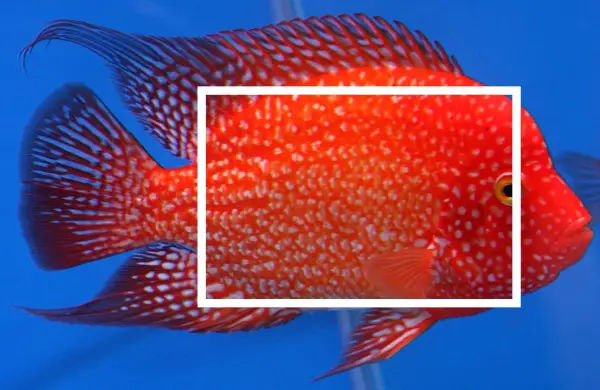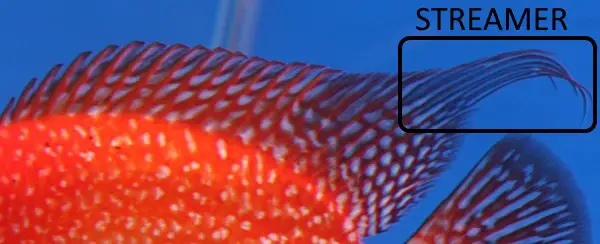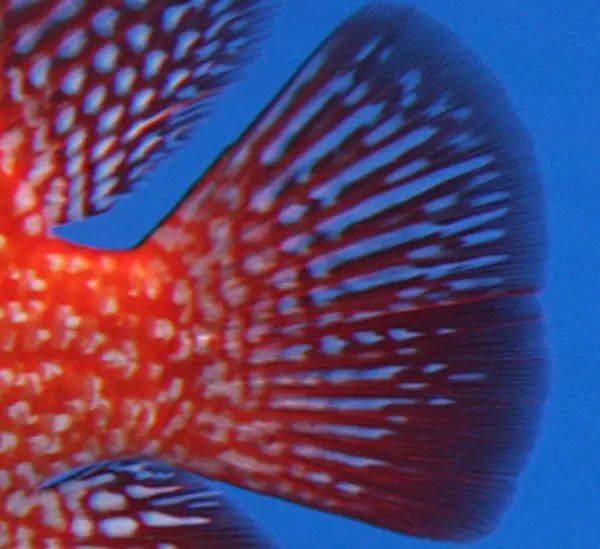The thing about red Texas cichlids is the price, isn’t it? Sometimes they go for hundreds and hundreds of dollars, and yet, you can pick them up at PetSmart for less than $50! It can be tempting to go for that less expensive fish, but you just can’t kick that nagging feeling that the more expensive fish might just be worth the price.
Why Are Some Red Texas Cichlids More Expensive Than Others?
It might seem obvious but, it’s because some are considered to be higher quality specimens. And by that I mean, they’re seen as generally more desirable.
People have been breeding dogs for hundreds of years. As such, we have organizations like the American Kennel Club. The AKC are happy to detail and publish “breed standards” for the different varieties of dog. So, judges can refer to the desired traits when deciding the winners of a dog show.
While not as institutionalized as dog breed standards, red Texas hobbyists have—more-or-less—come to a consensus on what is and isn’t desirable.
The Problem With “Breed Standards”
More important than what other people think about our fish, is what we think about our fish.
Breed standards are established on a consensus. And that’s fine! If people want to get together and find that, in general, most of them agree on what they want out of a variety, then that’s great.
However, when you pick a fish, remember, it’s going in your tank. You’re going to be the one looking at it every day. So, remember that while this article covers what’s considered desirable to many red Texas keepers, it’s more important that you like your fish.
Therefore, remember, put your personal preferences ahead of anything you read in this article!
Color – Red
Red is in the name of the fish, so let’s start with red. Most red Texas cichlids aren’t, in truth, very red at all. Actually, they’re usually more of an orange color. And sometimes, they can even be quite yellowish looking.
The tendency to show orange rather than red comes from one of the component species, the midas cichlid. The midas and/or red devil cichlid is used to created the blood parrot, which is then typically used as the female in a pair with a green Texas male to create F1 red Texas cichlids.
Check out this article on how they’re bred.
Cherry or crimson red is much, much more desirable and more difficult to maintain. It requires a combination of an underlying genetic component, the correct diet to encourage red, and finally it helps if the environment encourages a stronger coloration, i.e. a lot of hobbyists will use red and black gravel to encourage a truer red.

Some red Texas cichlids tend to have a white belly, but it is preferred if the red covers the fish’s underside.
Color – White
Red Texas cichlids are covered in white “pearls” or spots.
We need to say one last thing about red to understand what we want from white. Ideally, it’s preferred if there is a stark contrast between the red and the white. So, we want the red to be a true red rather than a light orange or, worse, a yellow. Then to further aid the contrast, we want the white pearls to be as close to pure what as possible. This is because cream or yellowish pearls don’t “pop” as well against the red base color. Furthermore, extremely white pearls almost have a reflective value that is highly sought-after.
The next important thing to consider with the white pearls is coverage. Consensus among red Texas keepers is that more pearl coverage is better, i.e. the pearls should cover the entire body, including the mouth/lips, and all the fish’s fins.
Not merged, clusters not desirable.
Preferred in the pearl pattern is somewhat uniform—inconsistencies in the pearl pattern lower the quality of the fish.
Overall Body Shape
We can learn a lot from koi keepers and breeders, and one of the biggest things we can learn from them is the focus on body shape. It’s tempting to ignore body shape for ideal color, but the shape of a fish’s body is an important ingredient in the recipe for an ideal aesthetic.
Your red Texas cichlid should have a somewhat deep body. Though, it should remain longer than it is tall, with an overall rectangular look to it. Obviously, a true rectangle shape would look ridiculous and isn’t possible anyway, but it should be closer to a rectangle than a torpedo shape.

And don’t underestimate the allure of a chunky fish. By that I mean, a red Texas cichlid’s body should be thick. And, importantly, that thickness should extend across the entire body. Especially the stomach, as many examples of the variety suffer from sunken or tapered stomachs which are not desirable.
Face Shape
To explain the desirable face shape in red Texas cichlids, I like to refer back to my dog analogy from earlier. Think of a German shepherd, it has a long snout. Now, compare that long snout to the short, stubby snout of pug. So, in red Texas cichlids we want the face to be short like a pug, not long like a German shepherd.

A deeper body and a more prominent nuchal hump (kok) can help in creating the look of a shorter face.
Fins
I think of the fins of a red Texas as like the icing on the cake.
As mentioned earlier, first and foremost, you want the white pearls to extend onto all the fish’s fins.
But, just as important as coloration, is the shape of the fins.

I like to think of the dorsal and anal fin together, because they should ideally mirror each other on the top and the bottom of the fish. They should have long extensions, sometimes called streamers, that ideally curl a little at the ends. Also, these fins should be as tall as possible, especially for the dorsal fin. It can be difficult to see how tall a Central American cichlid’s dorsal and anal fins are because they tend to clamp them.

The caudal, or tail, fin should be as broad and flared as possible. It should be big and round; think of it like an old fashioned folding fan.
Nuchal Hump
Red Texas cichlids are not flowerhorns.

While both varieties are Central American hybrid cichlids, the flowerhorn is composed of different progenitor species. In the flowerhorn, the size of the nuchal hump—or kok—is very important. Whereas, with the red Texas cichlid it is less important. While many breeders prefer a large nuchal hump in their red Texas cichlids, it isn’t at all vital for what would be considered a “masterpiece” red Texas cichlid.
Where Do I Find A “Good” Red Texas Cichlid
The best place to find a good red Texas cichlid is, in my opinion, to go directly to the breeder or a trans shipper. This is because you can open a dialogue with the breeder about the kind of fish you want and how much you’re willing to spend, and then the breeder can match you up with one of their fish.
The best place to find breeders is via Facebook. Check out some of the following groups:
Additional Reading
Ever wondered how to breed red Texas cichlids? Then check out this article on exactly how to do it.
Do you know the difference between “red Texas” and “Super Red Texas”? Then check out this piece explaining what the difference is!



